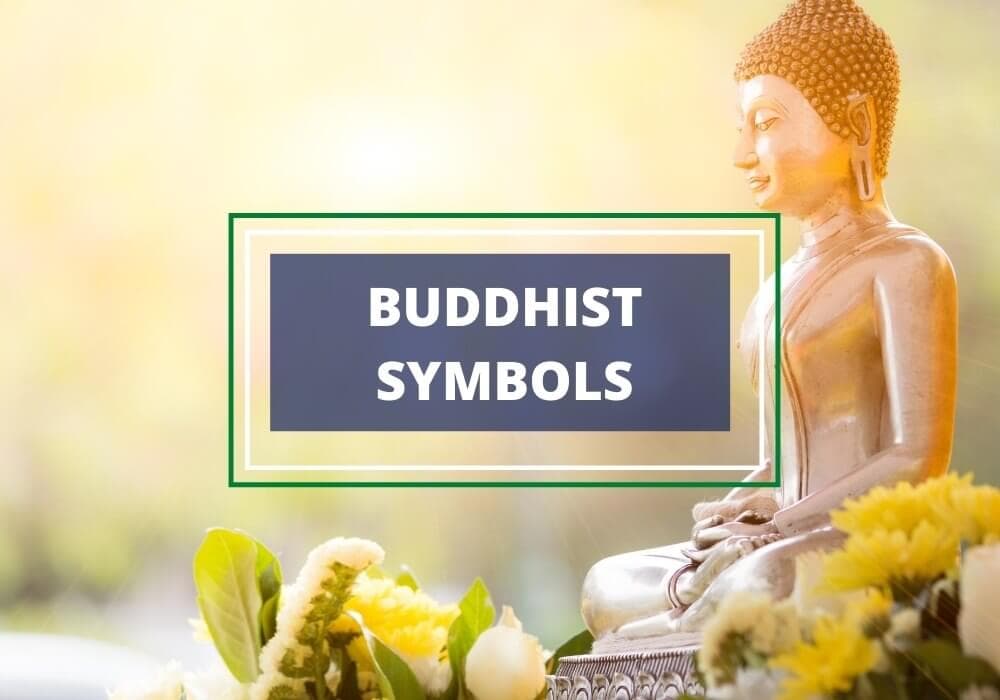
Table of Contents
Buddhist symbols exist to remind its followers of the path to nirvana and the teachings of the Buddha himself. While Buddhism is known to have many symbols, these did not appear in India until three centuries after the appearance of the Buddha.
As the philosophy of Buddhism spread across the world, many symbols have been used to depict Buddha and the principles of Buddhism. These include the Ashtamangala, or the eight auspicious symbols, which are the endless knot, lotus flower, dhvaja, dharmachakra, golden fish, parasol, conch shell and treasure vase, as well as several others, such as the bodhi tree and the mandala.
However, not all of these symbols are significant to every sect of Buddhism, with some being specific to certain schools of Buddhism.
Let’s take a look at some of the most important and well-known of the Buddhist symbols.
1. Endless Knot
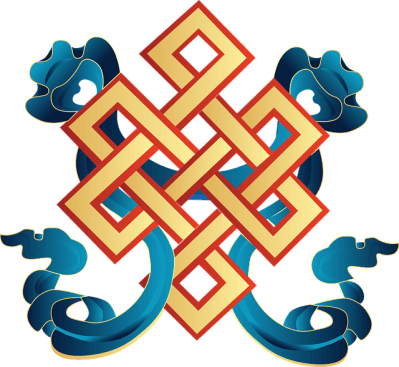
The endless or eternal knot is an intricate design with no beginning or end. As such, it represents the continuum of mind or Buddha’s infinite wisdom and compassion. This pattern also symbolizes Samsara which, according to Tibetan Buddhism, means the eternal cycle of suffering or reincarnation. Otherwise known as the auspicious drawing, the endless knot also represents the mutual dependence of secular affairs and religious doctrine. Some view it as a representation of the unity of method and wisdom.
2. Lotus Flower
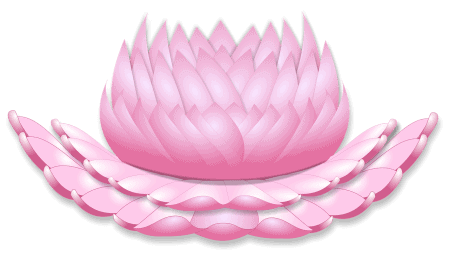
For Buddhists, the precious lotus flower represents the pure potential of the human mind or only purity. The lotus flower is a famous Buddhists symbol because it prompts reflection on how the lotus grows and its similarities to the path they must take to reach Nirvana.
Lotus flowers are born from underwater mud. Despite this, it perseveres and blooms until it reaches the surface to reveal a beautiful flower. That’s why it also serves to remind Buddhists to rise above all challenges to bloom fully.
3. Two Golden fish
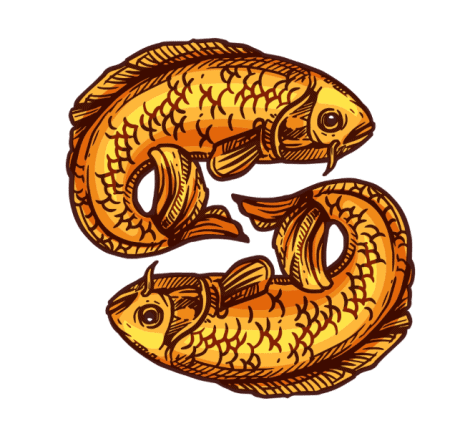
In a way, the two golden fish signifies good luck. It also teaches that if one practices the teachings of the Buddha, one can live in a state of fearlessness or courage. The two golden fish also represent fertility, abundance, good fortune, creation and freedom. In India, the symbol also represents the rivers Ganges and Yamuna.
4. Banner of Victory
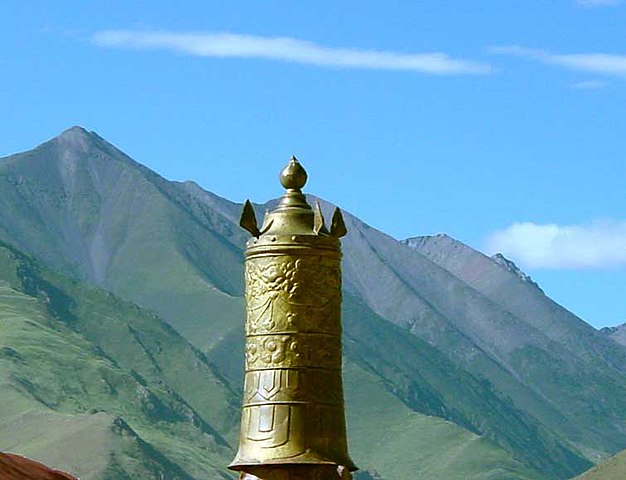
The victory banner, known as Dhvaja, was first used to represent the victory of Buddha over Mara, the demon that represented the fear of death, pride, passion, and lust. The banner of victory, therefore, reminds us that pride in one’s skills and actions will never win. It also represents Buddha’s complete and utter victory over all the destructive forces of nature.
5. Dharma Wheel
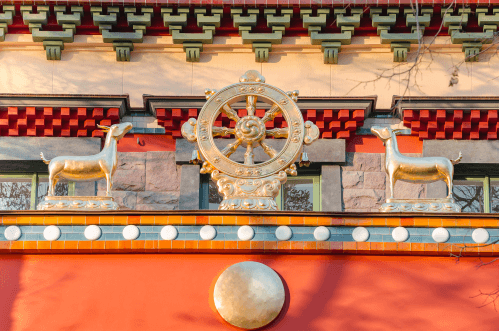
The Dharma Wheel is one of the most significant symbols of Buddhism because it represents several important concepts of the religion. Depending on the number of spokes seen on the dharma wheel or dharma chakra, it can signify the Four Noble Truths, the Eightfold Path or even the 12 Causal Links of Dependent Origination. But generally speaking, the dharma wheel, or dharmachakra, represents Buddha and his teachings that lead to enlightenment or nirvana.
6. Treasure Vase (Bumpa)
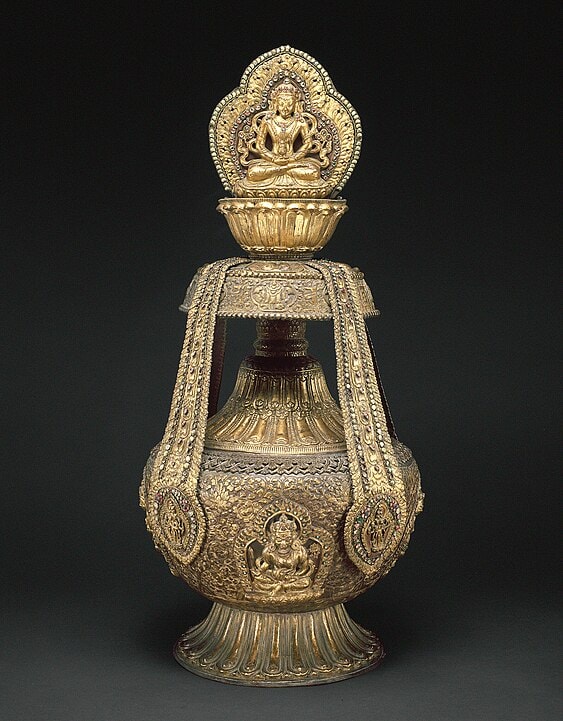
The treasure vase is a large, round vessel with a short, slim neck, on which is placed a jewel. As a vase, it’s associated with storage and material desires, but in Buddhism, it’s a typical symbol for all the good fortune in health, wealth, and long life a person receives once they reach enlightenment. It also reminds us to enjoy the wealth coming from faith, moral, and spiritual discipline that comes with Dharma.
7. Parasol
The precious parasol or umbrella teaches us that being part of the Buddhist community or literally being under its umbrella protects people from suffering. Hence, the parasol represents the Buddhist community and liberty, protection, enjoyment, and clarity it provides its members.
8. Conch Shell (Sankha)
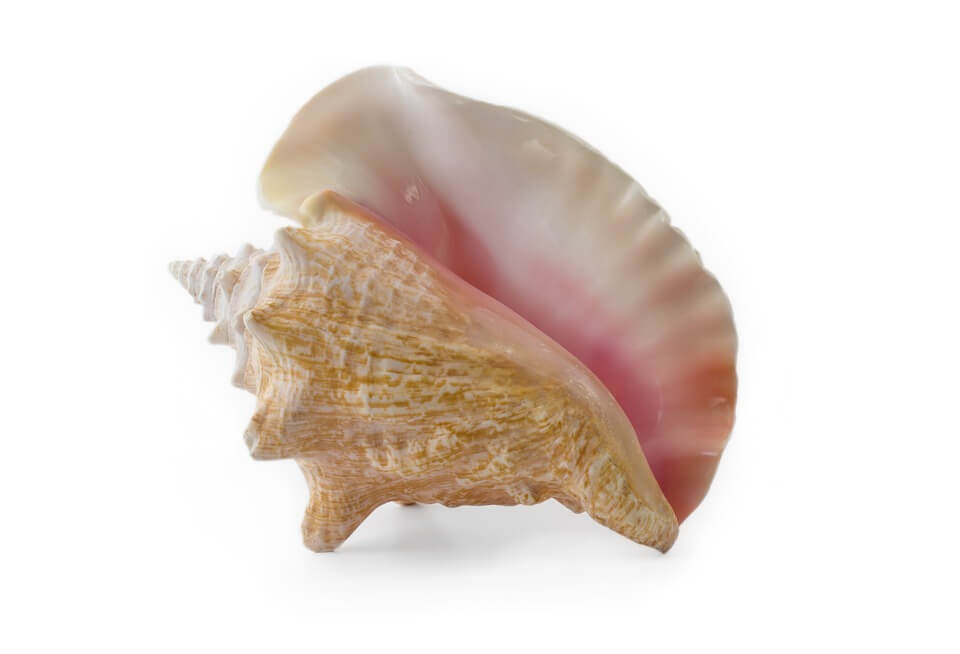
Conch shells are highly symbolic items in Buddhism, but there are some general rules when selecting the right conch shell. For it to have significance, Buddhists typically use a white conch shell, which is coiled to the right to represent the happiness and contentment that can be achieved through following the Dharma teachings.
Unlike how conch shells are used in other cultures as traditional battle horns, Buddhists use them as symbols of peace and wisdom. It also refers to the resounding melody of Buddhist doctrines that awakens disciples from the deep slumber of ignorance.
9. Fly Whisk

A fly whisk or hossu is a wooden gadget with a bundle of animal hair that is used to swat flies. It is a common symbolism for Zen Buddhism which is prevalent in Japan and China. A fly whisk also has something to do with sweeping of ignorance and other mental afflictions.
It is also used to show the authority of a Zen Buddhist in preaching the teachings of Dharma to others.
10. Mandala

The Mandala is a circular design with several symbols beautifully combined to create a holistic image. It’s a famous symbol not only for Buddhism, but also for other religions in Asia such as Hinduism, Jainism, and Shintoism. The image is used for a variety of purposes, including as a tool for meditation, to focus attention, or for creating a sacred space, among others.
Vajrayana Buddhists use the mandala as a visual representation of the core teachings of their religion. It represents the universe and also reveals the true nature of an enlightened mind. Most mandalas are designed in expertly woven silk tapestries and multi-colored sand paintings.
11. Triratna

Triratna literally means “three jewels” in Sanskrit. Also known as the Three Refuge, the Triratna represents the three jewels of Buddhism – namely, the Buddha, the Dharma (the Buddhist teachings), and the Sanga (the Buddhist community).
It’s almost the same as the Holy Trinity of Christianity but instead of defining three personas of one God, Triratna reminds its followers where to seek refuge. This should not be confused with the Jain Triratna, which represents the right faith, right knowledge, and proper conduct.
12. Bodhi Tree and Leaves

The bodhi tree is a sacred symbol for Buddhists because it represents the place where Siddharta Gautama reached enlightenment. It’s believed that he attained nirvana while meditating for an extended period of time under a Bodhi tree. As such, the tree constitutes wisdom, compassion, and complete acceptance of the Buddhist faith.
The leaves of the bodhi tree signify every person’s potential to reach nirvana. Bodhi trees are also respected for their cool shade, especially on hot days in tropical climates, and are believed to give a sense of peace and relaxation.
13. Enso Symbol
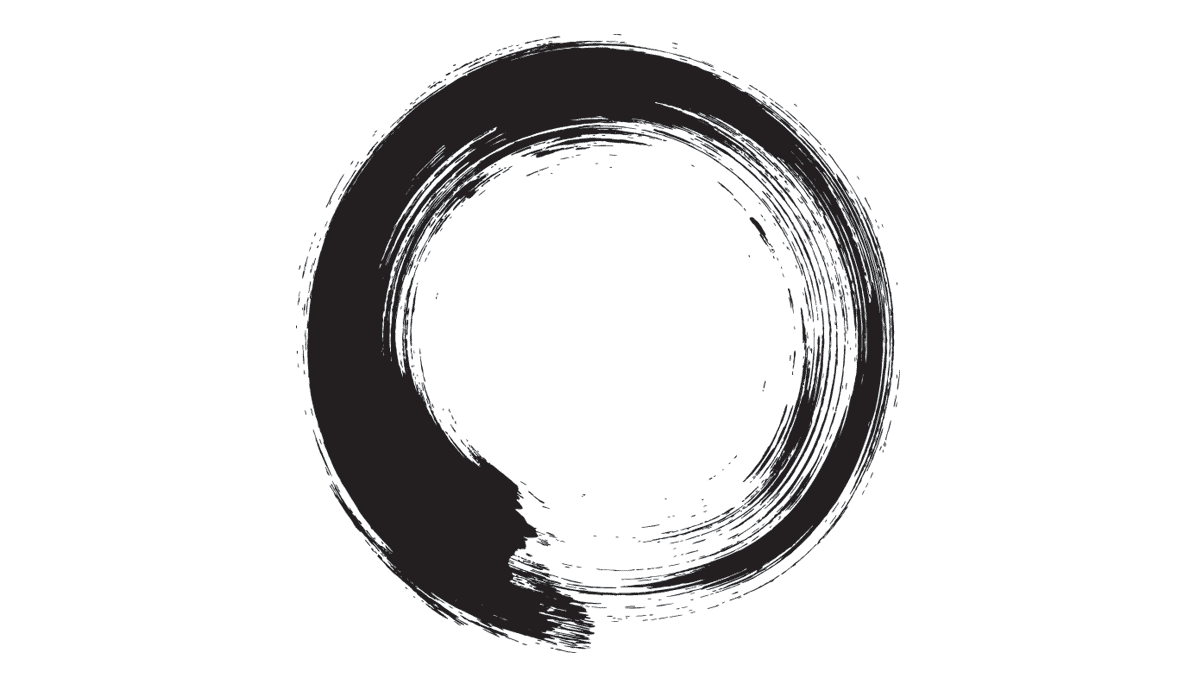
This is another symbol more common with Zen Buddhists. It is a visual representation of the Heart Sutra or the Heart of the Perfection of Wisdom. The enso symbol is also widely used as a reference to “The Circle of Enlightenment. On top of all this, it also signifies many good qualities like strength, elegance, and inner selves.
14. The Lion

The lion is an essential part of Buddhist tradition because it often represents the Buddha’s voice, called the “lion’s roar.” This roar needs to be loud enough for people to be able to listen and comprehend the teachings of Dharma. The lion’s roar also reminds Buddhists to be brave even in the face of hardships to achieve happiness and harmony. The lion also represents the royal beginnings of Siddharta Gautama, who was a prince before he chose to let go of his worldly possessions.
15. Swastika
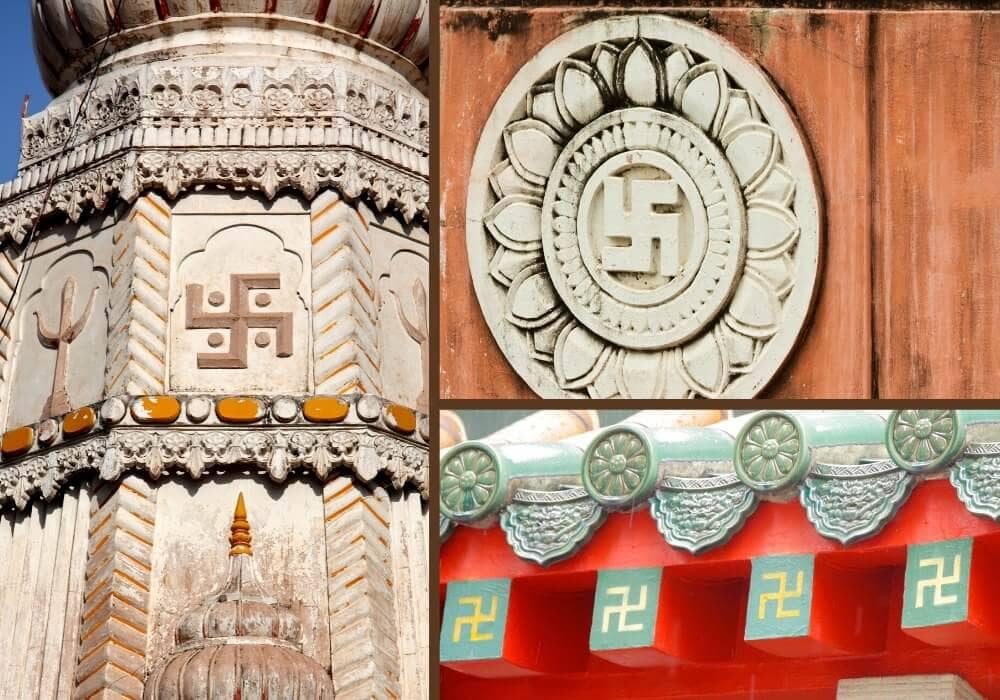
Contrary to popular belief, the swastika wasn’t originally a symbol of Nazi Germany. The ancient swastika is actually a symbol of good luck, peace, and positivity, with many positive meanings. In Buddhism, the swastika represents the seal containing Buddha’s heart and mind. It symbolizes Samsara (the eternal cycle of rebirth and death) as well as the auspicious footprints of Lord Buddha.
Wrapping Up
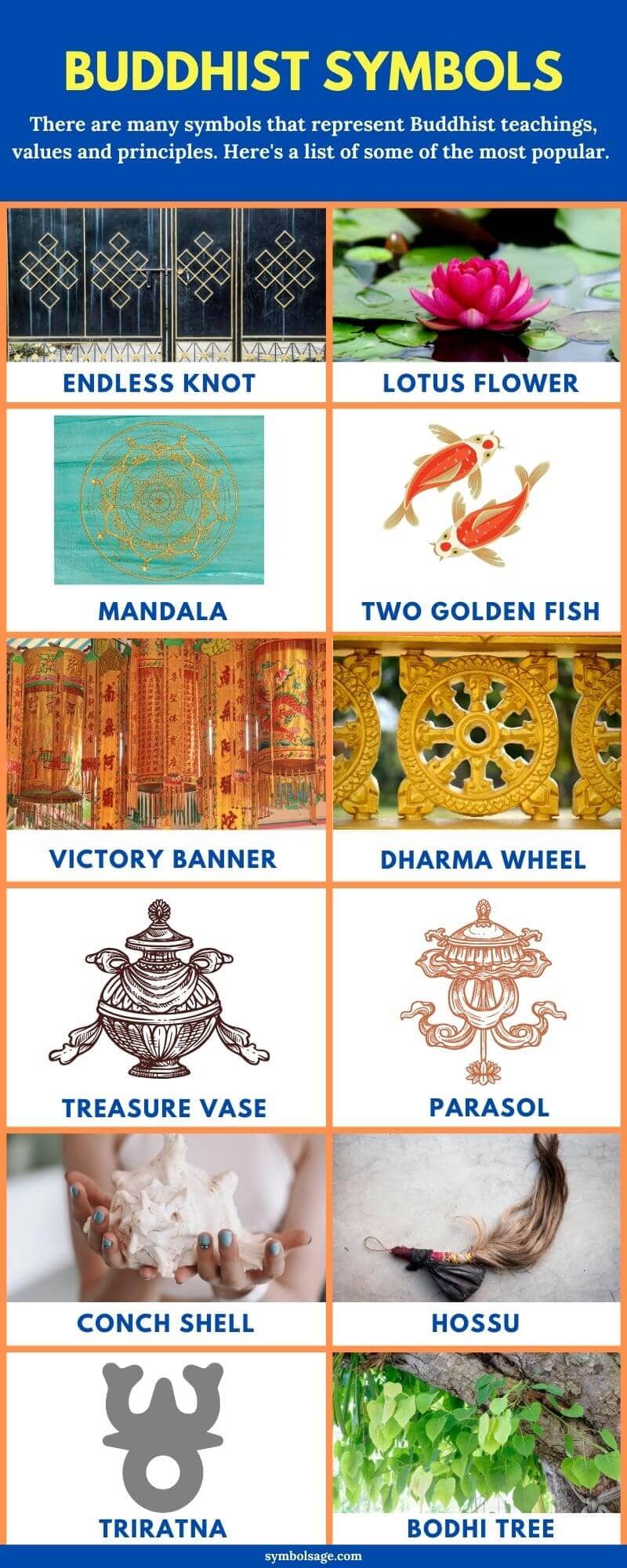
The above symbols are highly significant in Buddhism as they are reminders of the principles of the faith. As there are many denominations of Buddhism, some of these symbols are more highly valued in certain denominations over others.








